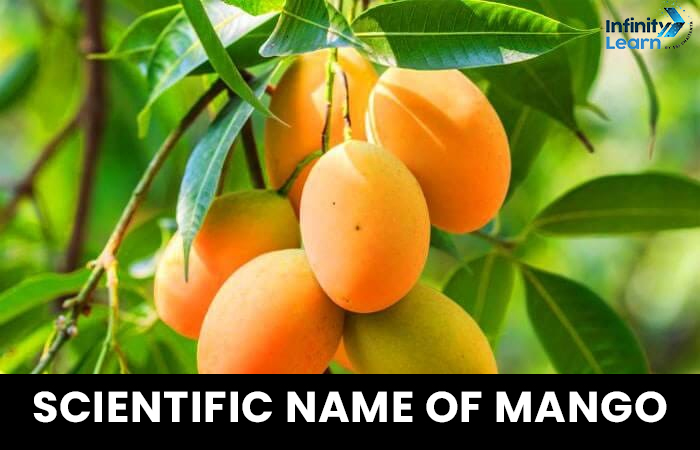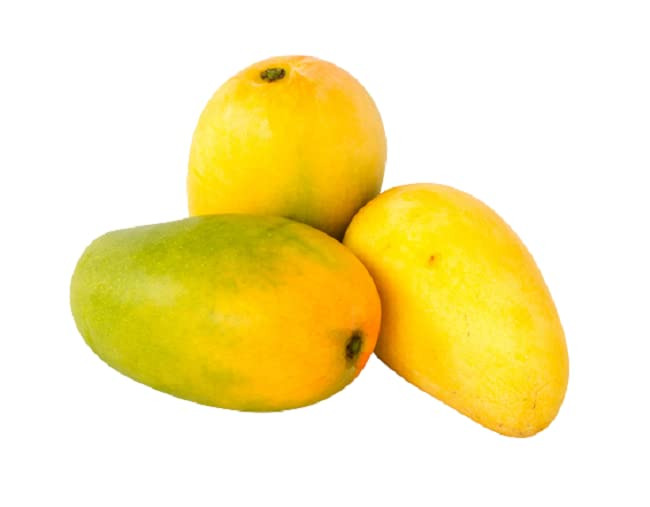Table of Contents
Scientific Name of Mango: The mango, scientifically known as Mangifera indica, belongs to the Anacardiaceae family. It is a large fruit tree that can grow up to 30 meters tall. There are two main types of mangoes: the “Indian type” and the “Southeast Asian type,” which belong to separate genetic groups.
For more than 4,000 years, Ayurveda and traditional medicine have made use of mango. In India, people commonly refer to it as “aam.” The genus Mangifera includes approximately 30 species of tropical fruiting trees, among which mango is prominent.

What is Mango

Mango, often known as the “king of fruits,” boasts a unique blend of sweet and tangy flavors. A mango is a tropical fruit typically characterized by its sweet, juicy flesh and distinctive fragrance.
Taxonomy of Mango
- Scientific Name: Mangifera indica
- Higher Classification: Anacardioideae
- Kingdom: Plantae
- Family: Anacardiaceae
- Rank: Genus
- Order: Sapindales
Mangifera indica, commonly known as mango, belongs to the kingdom Plantae and the family Anacardiaceae. It falls under the higher classification of Anacardioideae and is classified as a genus within the order Sapindales.
Also Check: Medicinal Plants Name
Scientific Name of Mango
Mangifera indica, is the scientific name for mango, that belongs to the Anacardiaceae family. Originating from South Asia, mangoes have spread across the globe, thriving in tropical and subtropical climates. The scientific name not only distinguishes mango botanically but also sheds light on its genetic lineage and ecological adaptations. This species name, “indica,” signifies its origin from the Indian subcontinent, where mangoes have been cultivated for thousands of years.
Types of Mangoes
- Alphonso Mango: Known for its sweetness and creamy texture, popular in India and considered one of the best mango varieties.
- Kent Mango: Juicy with a slight tanginess, smooth flesh, widely grown in tropical regions like Florida and Mexico.
- Ataulfo Mango (Honey or Champagne Mango): Small, oval-shaped fruit with a sweet, buttery flavor, often found in Latin America.
- Tommy Atkins Mango: Firm texture, mildly sweet taste, commonly grown in regions like Florida and Brazil, good for slicing and salads.
- Haden Mango: Sweet and aromatic, with a rich flavor, originally from Florida and now cultivated in various tropical regions.
- Keitt Mango: Keitt mangoes, primarily grown in California and Florida, are prized for their juicy flesh and tropical flavor.
- Manila Mango (Carabao Mango): Commonly found in the Philippines, Manila mangoes are sweet and fragrant, with a vibrant yellow skin.
Each type of mango offers a distinct taste and texture, making them versatile for consumption fresh, in salads, or in various culinary preparations.
Also Check: Science Topics
Characteristics of Mango
Mango possesses numerous distinct qualities, among which are:
- Sweetness: Mangoes boast a delightful sweetness, making them a beloved fruit for many.
- Juiciness: With their succulent flesh, mangoes burst with flavor when bitten into.
- Variety: Mangoes come in numerous types, each offering a distinct flavor, texture, and appearance.
- Nutritional Value: Rich in vitamins and minerals like vitamin C, vitamin A, and potassium, mangoes are a nutritious snack option.
- Fiber: Mangoes are a great source of dietary fiber, promoting healthy digestion and a well-functioning digestive system.
- Versatility: Enjoy mangoes fresh, in salads, smoothies, or incorporated into a variety of dishes.
- Seasonality: While ripest in summer, mangoes are available year-round in different regions worldwide.
- Aroma: Mangoes exude a tropical aroma, sweet and fragrant, enhancing their allure.
- Color: Available in shades of green, yellow, orange, and red, mangoes’ color varies based on ripeness and variety.
- Cultural Significance: Mangoes hold cultural importance across many countries, often tied to festivals, traditions, and celebrations.
Uses of Mango
Here are five uses of mangoes:
- Food: People enjoy mangoes fresh, in salads, or blended into smoothies for a delicious and nutritious snack.
- Medicinal Purposes: Certain cultures utilize mango leaves in traditional medicine to address conditions like diarrhea and diabetes.
- Cosmetics: Mango butter extracted from the seeds serves as a natural moisturizer in skincare products such as lotions and balms.
- Flavor Enhancement: Mangoes enhance the flavor of various dishes, from sauces to chutneys, with their sweet and tropical taste.
- Textile Dyeing: Mango leaves contribute to natural dye production, yielding hues of yellow and green used in fabric coloring.
| Other Topics | |
| Scientific Names of Plants and Animals | Fruits Rhymes |
| Scientific Name of Cobra | Fruits Names |
| Winter Season Fruits | Scientific Name of Human Being |
Scientific Name of Mango FAQ’s
What is the scientific name of mango and coconut?
Scientific name of mango: Mangifera indica Scientific name of coconut: Cocos nucifera
Which family does Mango belong to?
Mango belongs to the family Anacardiaceae.
What is the scientific name of mango leaf rust?
Scientific name of mango leaf rust is Phakopsora pachyrhizi
What is the scientific name for mango leaf spot disease?
Scientific name for mango leaf spot disease is Pestalotiopsis mangiferae.
What is the scientific name for Katchamita mango?
Scientific name for Katchamita mango is Mangifera indica









